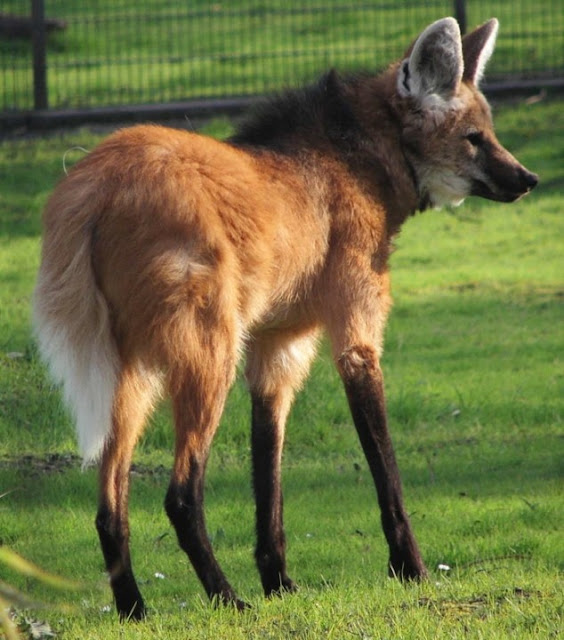And a hat tip to long-time reader Binho, from Brazil, who sent a link with this info:
The maned wolf's evolutionary relationship to the other members of the canid family makes it a unique animal. Electrophoretic studies did not link Chrysocyon with any of the other canids studied.
One conclusion of this study is that the maned wolf is the only survivor of the late Pleistocene extinction of the large South American canids. Fossils of the maned wolf from the Holocene and the late Pleistocene have been excavated from the Brazilian Highlands...
The maned wolf is not closely related to any other living canid. It is not a fox, wolf, coyote, dog, or jackal, but it is a distinct canid.

He is gorgeous!!! Thanks once again for sharing something new.
ReplyDeleteWhat a beauty!
ReplyDeleteHEI , Minnesotastan
ReplyDeleteHere is Binho,how are you?
This is a wolf-guará(in portuguese from Brazil is lobo-guará).
guará is indian language(tupi)
lobo = wolf
http://pt.wikipedia.org/wiki/Lobo-guar%C3%A1
http://www.youtube.com/watch?v=0gZXOME7-ew&feature=fvst
http://www.youtube.com/watch?v=WAH6_WNN3N8&feature=related
Thanks, Binho. Info added to the post.
ReplyDeleteFossil Rim Wildlife Ranch in Glen Rose, Texas had a pair they were raising. We stayed at their lodge a few times and the maned wolves were in pens just outside the lodge. They are beautiful animals, but they have a quite a strong aroma!
ReplyDeleteThere is a pair of maned wolves at the National Zoo in Washington DC. Plus there is a breeding poulation at the Smithsonian Conservation Biology Institute in Front Royal, VA.
ReplyDeleteWe also have a pair at the Louisville (KY) Zoo. And yes, they are very aromatic, even from the far side of their (> 1 acre) pen.
ReplyDeleteAwesome! I like these animals, gotta draw one of them one of these days.
ReplyDelete